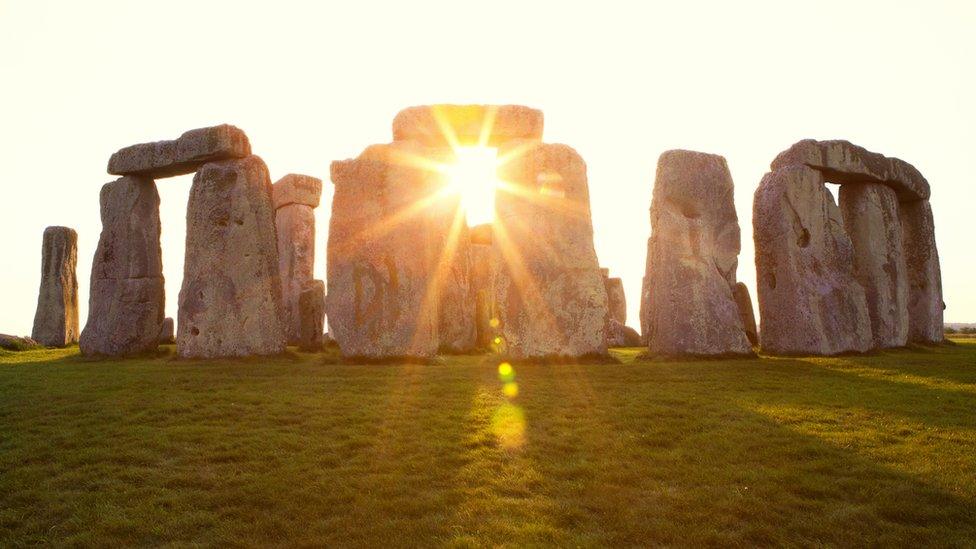Winter solstice: When is the shortest day of the year?
- Published
- comments

Thousands of people gather each year at Stonehenge in Wiltshire to watch the sun rise on the shortest day of the year.
Friday 22 December marks the Winter solstice across the northern hemisphere.
The date is the 24-hour period with the fewest hours of daylight in the year, which is why it is known as the shortest day and longest night.
At this time of year we get around eight hours of daylight. It might be the shortest day, but it's a reason to be cheerful as the days get longer from here!
The Winter solstice is the opposite of the Summer solstice - which has the most daylight and the longest day with the shortest night of the year.
Why does the Winter solstice happen?
It happens when the North Pole is tilted furthest away from the sun as the Earth continues on its orbit - which is why it's winter in the Northern hemisphere at this time of the year.
In the southern hemisphere it's exactly the opposite story - the South Pole is pointing towards the Sun, making it summertime in Australia.
In Sydney, Australia, they have their Summer solstice. Their mornings will start getting darker from the middle of December, and evenings will get lighter until early January.
But in the UK, and rest of the northern hemisphere, it means the sun rising earlier and setting later as we journey again towards the spring equinox.
But even though this is the point with the least hours of daylight, it's not the earliest sunset of the year, or the latest sunrise.
The mornings continue darkening until early in the new year.
The reason why is that a day - a solar day that is - is not always exactly 24 hours.
Pro: On the plus side, you could take advantage of the extra hours of darkness to do some stargazing.
Con: It also means though you'll be leaving the house for school when it's dark, and coming home when it's starting to get dark too.
Winter Solstice has been celebrated in cultures the world over for thousands of years.
In the olden days it was known as Yule, and was a celebration of light and the rebirth of the Sun.
'Yule' is still celebrated in Germany and Scandinavia, and this is where we get many many of our Christmas customs, including Christmas trees and putting wreaths on the front door.
UK: Thousands of people usually gather at Stonehenge in Wiltshire to watch the sun rise on the shortest day of the year. This image is from a previous year
LATVIA: Visitors attend the Fire walking Winter Solstice event in Baltezers in 2018
CANADA: In Vancouver a special Winter Solstice Lantern Festival is held every year.
CHINA: The Winter solstice marks the end of the harvest season and is celebrated with family gatherings and a big meal, including rice balls called tang yuan.
- Published18 June
- Published22 September 2023
